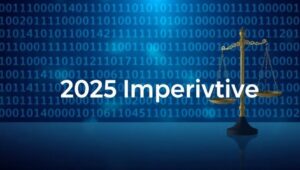Addressing Bias in Algorithms and Software: A 2025 Imperative
As we move further into 2025, the pervasive influence of algorithms and software in our daily lives becomes increasingly apparent. From loan applications to criminal justice, automated systems are making critical decisions that impact individuals and society as a whole. However, these systems are not neutral arbiters. They can perpetuate and even amplify existing biases, leading to unfair or discriminatory outcomes. This post examines the urgent need to address bias in algorithms and software, exploring its sources, consequences, and potential solutions.
Sources of Bias in Algorithms
Algorithmic bias arises from various sources throughout the software development lifecycle. Understanding these sources is crucial for effective mitigation:
- Data Bias: Algorithms learn from data, and if that data reflects historical or societal biases, the algorithm will likely replicate those biases. For example, if a facial recognition system is trained primarily on images of one demographic group, it may perform poorly on others.
- Algorithmic Design: The choices made during algorithm design, such as the selection of features or the weighting of different factors, can introduce bias. If the designers are not aware of potential biases or do not take steps to mitigate them, the algorithm may perpetuate unfair outcomes.
- Human Bias: Human biases can seep into algorithms through the data labeling process, the selection of training data, or the evaluation of algorithm performance. Even well-intentioned individuals can unintentionally introduce bias into the system.
- Feedback Loops: Algorithms are often deployed in dynamic environments where their decisions influence future data. If an algorithm makes biased decisions, those decisions can create a feedback loop that reinforces and amplifies the bias over time.
Consequences of Algorithmic Bias
Algorithmic bias has far-reaching consequences across various domains:
- Discrimination: Biased algorithms can lead to discrimination in areas such as hiring, lending, and housing. For example, an automated resume screening tool may unfairly penalize candidates from certain demographic groups.
- Inaccurate Predictions: Biased algorithms can produce inaccurate predictions, leading to poor decision-making. This can have serious consequences in areas such as healthcare and criminal justice.
- Erosion of Trust: When individuals perceive algorithms as biased, it can erode trust in technology and institutions. This can undermine the legitimacy of automated systems and hinder their adoption.
- Reinforcement of Inequality: Algorithmic bias can perpetuate and reinforce existing social inequalities, making it more difficult for marginalized groups to achieve economic and social mobility.
Strategies for Mitigating Algorithmic Bias
Addressing bias in algorithms requires a multi-faceted approach involving technical, ethical, and policy considerations:
- Data Audits: Conduct thorough audits of training data to identify and address potential biases. This may involve collecting additional data, re-weighting existing data, or using data augmentation techniques.
- Algorithmic Transparency: Promote transparency in algorithm design and decision-making. This can help identify potential biases and ensure accountability.
- Fairness Metrics: Develop and use fairness metrics to evaluate the performance of algorithms across different demographic groups. This can help identify and mitigate discriminatory outcomes.
- Bias Mitigation Techniques: Employ bias mitigation techniques during algorithm training and deployment. These techniques can help reduce the impact of bias on algorithm performance.
- Human Oversight: Incorporate human oversight into the decision-making process. This can help prevent biased algorithms from making unfair or discriminatory decisions.
- Ethical Guidelines: Establish ethical guidelines for the development and deployment of algorithms. These guidelines should address issues such as fairness, transparency, and accountability.
The Path Forward
Addressing bias in algorithms and software is not merely a technical challenge; it is a societal imperative. As algorithms become increasingly integrated into our lives, it is essential to ensure that they are fair, transparent, and accountable. By taking proactive steps to mitigate bias, we can harness the power of algorithms to create a more just and equitable society. In 2025 and beyond, our collective efforts must prioritize the development and deployment of unbiased algorithms that benefit all members of society.
Long-Tail Keyword Variations:
- How to identify algorithmic bias in software.
- Best practices for mitigating data bias in AI.
- The ethical implications of biased algorithms.
- Legal frameworks for addressing algorithmic discrimination.
- Tools for auditing and ensuring fairness in machine learning models.




